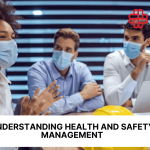Due to the nature of aviation, many health and safety risks are unavoidable. Strict and extensive health and safety standards should be followed to combat these risks and minimise potential hazards. Alongside these standards, an organisation must create its safety procedures to protect the well-being of employees and customers.
It is essential to have detailed risk management strategies to create and manage effective safety procedures. Risk management surrounds all areas, starting with identifying risks and hazards and their potential detriment. Once identified, hazards must be prioritised and categorised based on various factors, including damage potential and probability. With this information, individuals will be able to establish effective safety procedures.
Utilising hazard information, those responsible can create safety procedures that outline and explain the ideal steps to take in a crisis. All safety procedures must also be readable and accessible to anyone needing access.
Upon completion of this course, participants will be able to:
- Understand the vitality of aviation safety procedures within an aviation organisation.
- ٌeview local and regional laws and legislation regarding health and safety to ensure all procedures are compliant.
- Explain the fundamental concepts behind safety management systems (SMS) as defined by primary aviation organisations.
- Recognise the consequences of poor safety procedures on employees and customers.
- Utilise various methods and techniques to identify and prioritise hazards and risks accurately.
- Establish effective strategies to enhance existing safety procedures and measure procedure performance.
- Promote a workplace culture that is aware of all safety procedures, and is confident in the roles of leadership, system structure and reporting systems.
This course is designed for anyone in the aviation industry responsible for managing health and safety. It would be most beneficial for:
- Operations Managers
- HSE Officers
- HR Personnel
- Risk Managers
- Risk Analysts
- Senior Executives
- Compliance Officers
This course uses a variety of adult learning styles to aid full understanding and comprehension. Participants will review real-world examples of safety procedures within aviation organisations to highlight essential details, major risks and areas that may be improved.
Through a combination of learning methods, including seminars, group discussions, and individual and group activities, the participants will have ample opportunities to develop their knowledge of the taught content. To better guarantee full comprehension, participants will work alongside one another to create their own safety procedures and can offer and receive constructive feedback from others.
Day 5 of each course is reserved for a Q&A session, which may occur off-site. For 10-day courses, this also applies to day 10
Section 1: Fundamentals of Aviation Safety
- Defining what aviation safety is and how it applies to an organisation.
- What internal and external factors can influence how safety procedures are created and enforced?
- The roles of risk managers and HSE officers within aviation.
- Understanding the consequences of poor safety and how it affects the organisation, the employee and the customer.
- Common risks typically found within the industry.
- Identifying what laws and legislation must be complied with.
Section 2: Securing Data and Systems
- Procuring data in relation to health and safety.
- Establishing a secure and accessible system to store vital information.
- Analysing safety data to identify and predict patterns of risks.
- Creating or utilising a system designed for all necessary personnel to report risks or hazards.
- Ensuring systems are compliant with safety standards and regulations.
Section 3: Risk Management
- Evaluating the role of risk management within aviation.
- Methods of hazard identification and risk assessment to ensure completely accurate information.
- Categorising and prioritising risks based on severity and probability.
- Implementing a risk management team to oversee all risks, manage reports and adjust necessary safety procedures.
- Utilising the Regulatory Safety Management System (RSMS).
Section 4: Improving Organisation Safety
- Creating action plans detailing goals, objections and expectations surrounding safety.
- Prioritising employee and public health over productivity and profit.
- The various methods of improving safety procedures, their benefits, and limitations.
- How to effectively respond to triggered hazards or risks.
Section 5: Attitudes to Safety
- Encouraging an environment that is open to change and safety improvements.
- How to respond to backlash and change resistance.
- Ensuring all safety procedures are readable and accessible to all employees.
- Communicating personally with employees to guarantee an understanding.
Upon successful completion of this training course, delegates will be awarded a Holistique Training Certificate of Completion. For those who attend and complete the online training course, a Holistique Training e-Certificate will be provided.
Holistique Training Certificates are accredited by the British Assessment Council (BAC) and The CPD Certification Service (CPD), and are certified under ISO 9001, ISO 21001, and ISO 29993 standards.
CPD credits for this course are granted by our Certificates and will be reflected on the Holistique Training Certificate of Completion. In accordance with the standards of The CPD Certification Service, one CPD credit is awarded per hour of course attendance. A maximum of 50 CPD credits can be claimed for any single course we currently offer.
- Course Code IND18-101
- Course Format Classroom, Online,
- Duration 5 days














